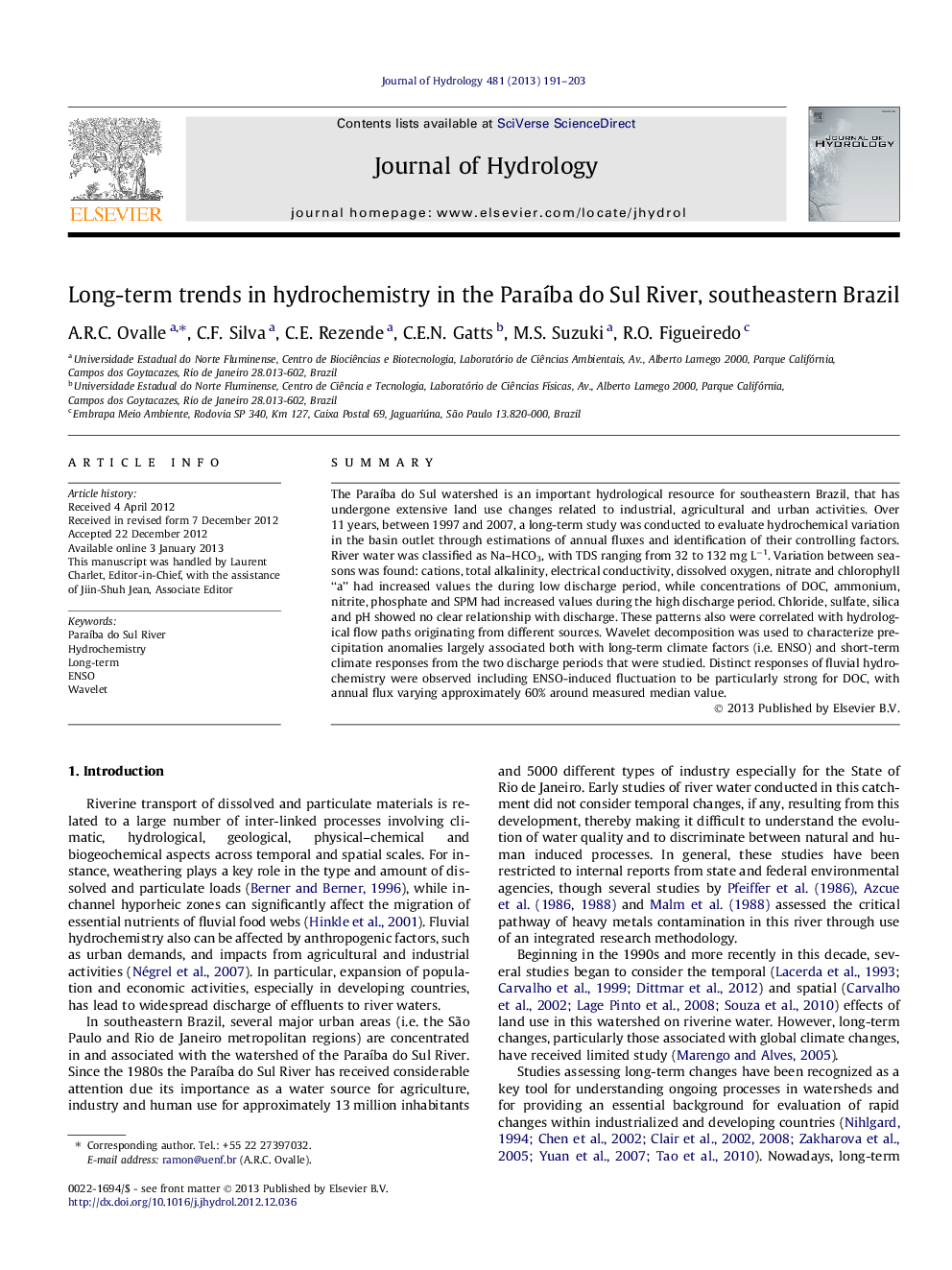| Article ID | Journal | Published Year | Pages | File Type |
|---|---|---|---|---|
| 4576487 | Journal of Hydrology | 2013 | 13 Pages |
SummaryThe Paraíba do Sul watershed is an important hydrological resource for southeastern Brazil, that has undergone extensive land use changes related to industrial, agricultural and urban activities. Over 11 years, between 1997 and 2007, a long-term study was conducted to evaluate hydrochemical variation in the basin outlet through estimations of annual fluxes and identification of their controlling factors. River water was classified as Na–HCO3, with TDS ranging from 32 to 132 mg L−1. Variation between seasons was found: cations, total alkalinity, electrical conductivity, dissolved oxygen, nitrate and chlorophyll “a” had increased values the during low discharge period, while concentrations of DOC, ammonium, nitrite, phosphate and SPM had increased values during the high discharge period. Chloride, sulfate, silica and pH showed no clear relationship with discharge. These patterns also were correlated with hydrological flow paths originating from different sources. Wavelet decomposition was used to characterize precipitation anomalies largely associated both with long-term climate factors (i.e. ENSO) and short-term climate responses from the two discharge periods that were studied. Distinct responses of fluvial hydrochemistry were observed including ENSO-induced fluctuation to be particularly strong for DOC, with annual flux varying approximately 60% around measured median value.
► Long-term hydrochemical characteristics of the Paraíba do Sul River were studied. ► Annual fluxes and controlling factors were analyzed. ► Hydrochemical responses to ENSO anomalies were evaluated.
